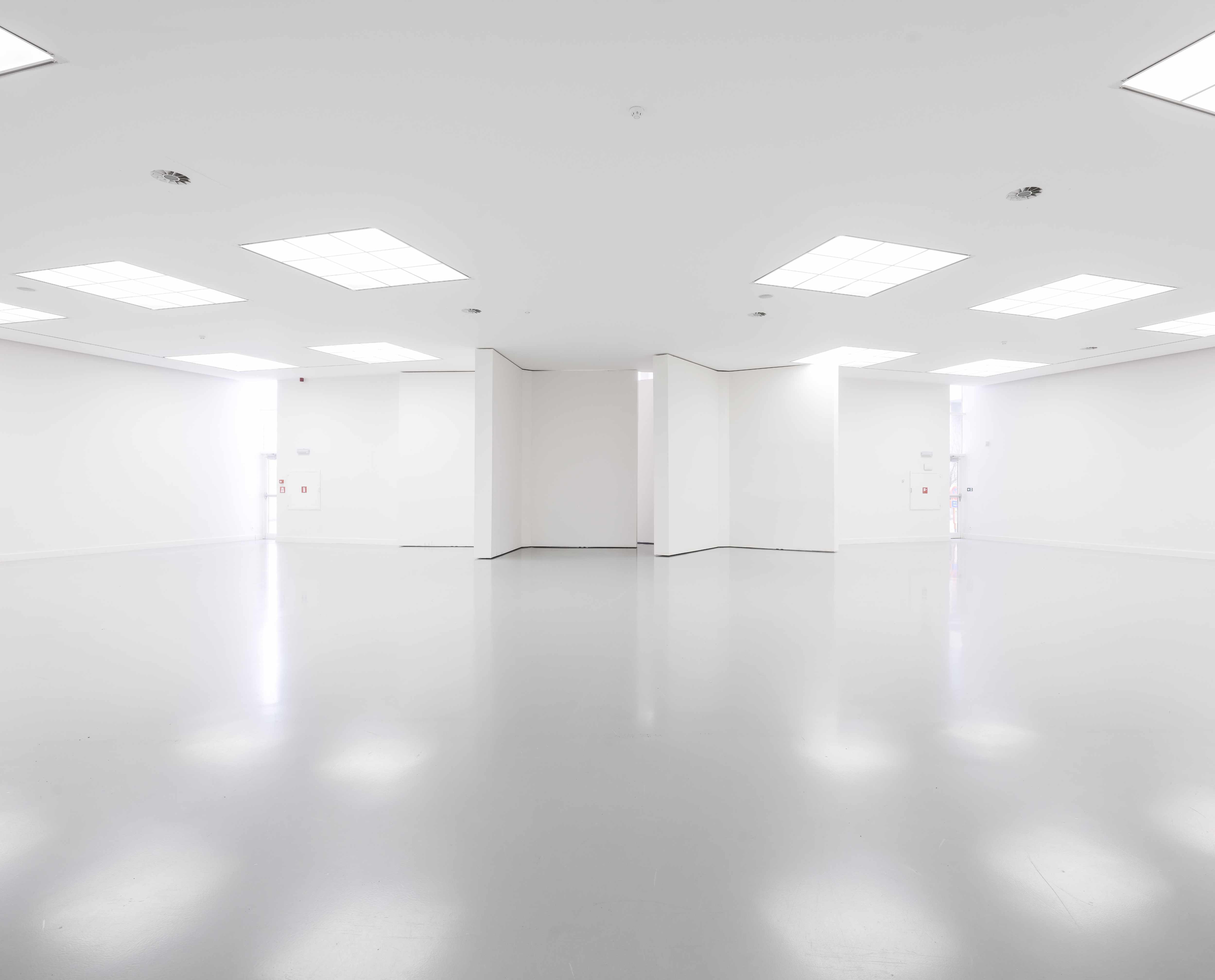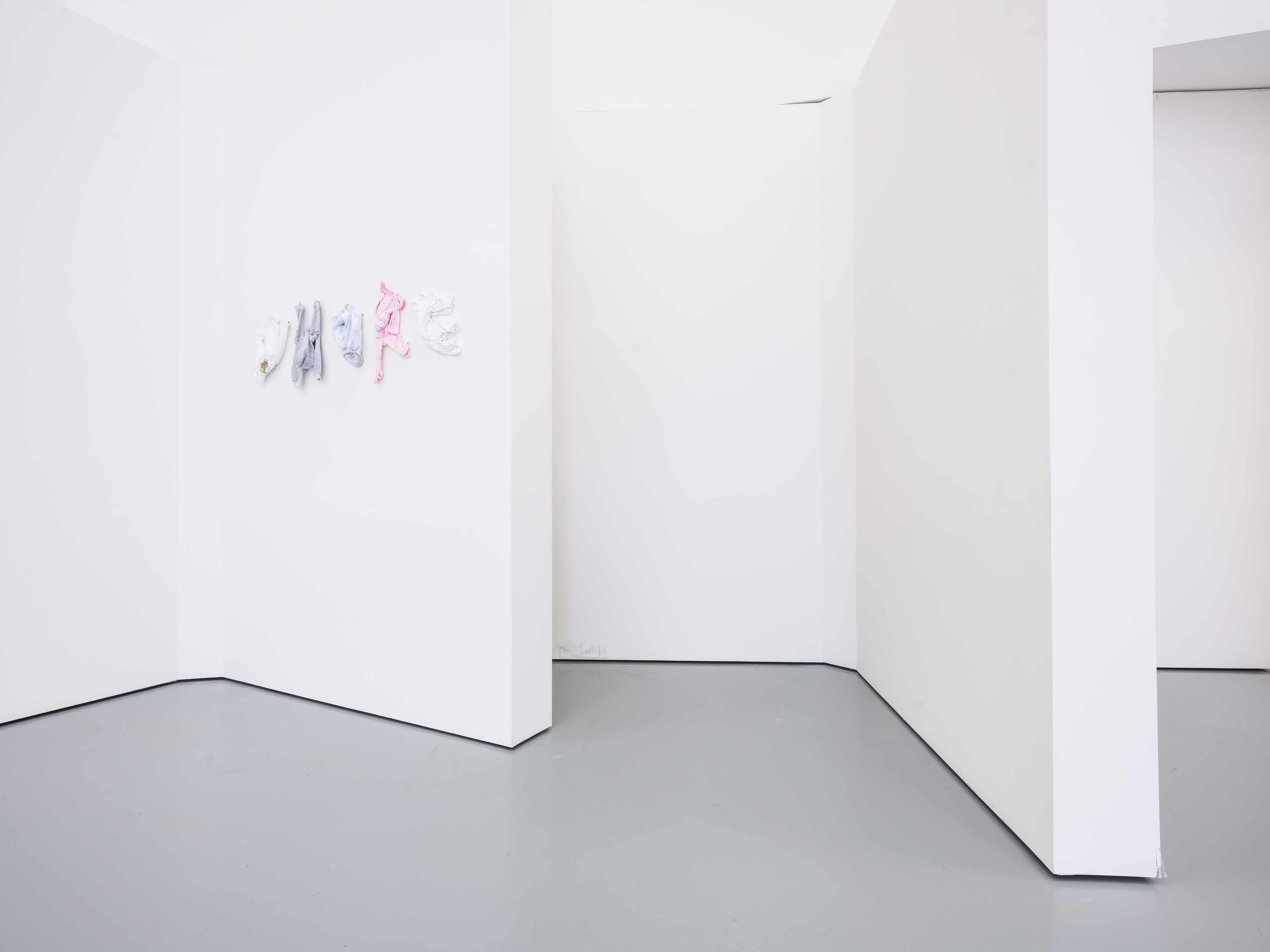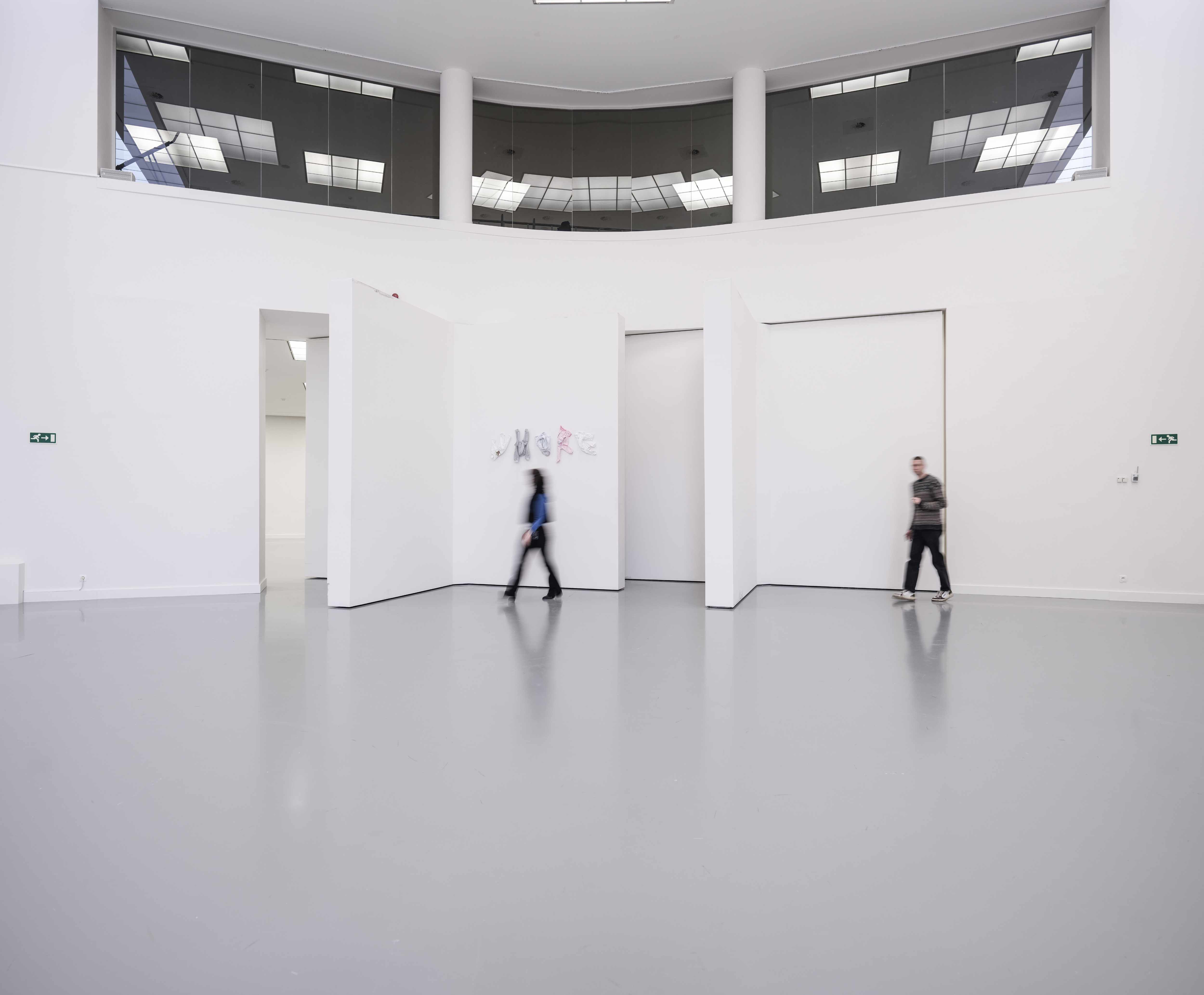Bruno Zhu Out
M HKA
25 January - 11 May 202505-08-2025
One does come out of the closet, come out of a relationship, come out at night, for a walk, to dance, to fuck. Being “out” is to be exposed to the potential of a perpetual openness. It, therefore, isn’t a stretch to claim that being in a state of “outness”—in a state of being “out”—is akin to the desire for freedom. And manipulating this freedom is what lies at the center of Bruno Zhu’s exhibition “Out” at M HKA, Antwerp, a new work commissioned as part of their IN SITU series.

Zhu’s installation begins with a double-edged welcome to the show itself. Effectively, through a sprawling collection of synonyms—to “log off,” “to discontinue,” “to scram,” “to run off,” “to vamoose,” etc.—we are invited at first encounter to leave, or, at least, to consider what various styles of departure and refusal might elucidate. These provocations are handed to us via the museum’s white wall, on which this introductory list of verbs is sealed with a big red kiss. This insistence on leaving puts the viewer in a rather uncertain bind with the installation itself, as to do the opposite of what we are told, “to take a step forward,” “to enter,” “to walk in,” is suddenly burdened with ambivalence. If something goes wrong up ahead, well, we were warned after all. Given this, the red lipstick kiss left lingering atop the show’s title takes on the form of a crude Shakespearean bad omen. It’s a kiss primed to start the relationship with the viewer on good terms. It is a seduction, a familiar expression of intimacy, not often found within the rigid walls of an art museum and, therefore, a contradictory comfort; a stark warning, a bright red flag in and of itself. It symbolizes that the relationship with the institution has always been of the affair variety, something that was supposed to end, something “to get out” of. In bringing these two registers of formality and flipancy together, it also skeptically reflects the institution's commitment to the artists it works with: often hot and heavy, short-lived and on its own terms.
The first intervention after the list we come across is an exit sign, though an unreliable one. Slipping into the organizational language of the space—literally utilizing it in fact—the sign becomes legible as an intervention of Zhu’s through its inclusion as an image in the exhibition booklet. Here, the viewer is again on the back foot, as it is easy to misread the sign as part of the space rather than the installation. And, in fact, the sign points in the wrong direction, at least if one is searching for an informational sign of security, to know exactly where to move in case of an emergency that might force one out, “to exit.” Instead, we are being pushed towards inside, to the show’s centerpiece: an imposing system of two x-shaped revolving white walls, functioning in the space as interlocking cogs that rely on the viewer for activation. It demands touch from the audience, a push that culminates in reveal, as these wall mechanics create a wedge in the exhibition space. By taking center stage, they literally create a threshold that one must pass through, letting us know, if we can trust the signifiers at all, that there is something behind to see or to experience. This tension of teasing between the artist and the audience reoccurs throughout, and an habitual desire for demanding attention is what we are implicated in. But even though there is a freedom of choice for us, too, our freedom and desire in this case are constrained through Zhu’s architectural play.

The trick, though, is that there is no out with Zhu, given that the space we are trying to push through to results in a dead end. Stuck in this limbo of misdirection, we are forced to constantly question what is inside and what is outside—both of our sense of comprehension and of the borders of the work itself. Yet amidst this spiral of confusion, across the threshold and deep in the belly of Zhu’s work, a voice suddenly enunciates, grounding the experience momentarily. Playing periodically, the single-channel audiopiece Listen, 1989–2025 (2025), is a found recording of AOL's trademark “You've got mail” saying, famously voiced by Elwood Edwards. It’s almost a salvation reaching your ears, rendering you static. Through focused listening, as the work’s title instructs us to do, the familiar saying takes on a different tone. In its periodic repetition—and perhaps because of Zhu’s earlier juggling with terminology and its possible stand-ins—the word “mail” morphs and molds into its homophonic counterpart. “Mail” becomes “male,” and through this humorous linguistic play, a new proclamation of outness is made.
Beyond M HKA, Zhu’s work often relies on different mediums of artistic practice and its commercialized affiliates, like interior design, fashion design, advertising and product photography. In a recent exhibition at Chisenhale Gallery, London, Zhu conceptualized a written license agreement for the gallery, within which he provided step-by-step instructions for implementing the exhibition design, in turn positioning him as someone more akin to an art director, rather than an artist. The work is shrouded in slick and colorful textures, and in relying on the provocation of words and interiors, an aesthetics of seduction permeates throughout the practice. This constant push and pull between possibilities acts as a form of choreography.
In returning to “Out,” an interesting thing happens when this tension takes on a life of its own: the audience takes the liberty of force in the work itself. Desire can be intoxicating, and in the case of Zhu’s work, that force shows its signs on the sides and edges of the walls. To be able to get out, or through, the audience has to move the two intersecting cogs in a particular order, meaning that pushing through the two different surfaces of the walls in a systematic manner is the only way forward. However, when the unhindered choreography of the audience doesn’t match with the artist’s desire, the walls crash into each other, resulting in broken edges, heavy scratches and cracked swathes of plasterboard. This leaves the space itself in need of mediation, which takes the form of the gallery invigilator, who steps in to prevent damage, leaving the audience with no agency of their own. Like the list we encounter as soon as we enter the space, we are seemingly smothered with choice but ultimately only left with one option. The signs of damage then take on a different tune, acting as a form of resistance to the aestheticism of Zhu’s artistic directing. In the disfigured white walls of the cogs, we are left to face the failing of the work itself. Yet in the spirit of Zhu’s practice, where everything is rarely what it seems, this so-called “failing” becomes its own inversion, it becomes the work’s success. For while the experience is highly mediated, what it points to, in returning to the liberatory nature of freedom, is the artificiality of mediation itself. In all the attempts to control—social, political, sexual—emancipation prevails.

Hung on one of the eight surfaces of the interlocking walls is Lesson for one to six months old, 2023–2025 (2025). As you move back through the cogs, you are at some point faced with five obscured letters which, from a distance, appear as abstract shapes. Each letter is composed of a contorted infant onesie, which together spell out the word “WHORE.” Much like many other instances throughout the exhibition, this gesture relies on tongue-in-cheek humor (like how one might turn the sound “you've got mail” into “you've got male”), testing the prudishness of one’s reaction to the gimmick at hand as well as the audience’s patience after so much prodding. In using the onesie as the vessel, we are supposedly faced with a perverse, immoral humor. Babies are pure, a blank canvas of niceties, but by imposing a word like “whore” onto the symbolism of this tabula rasa, the show cynically forces the audience’s hand in a judgment of morals. However, in offering up a reading perhaps too earnest for Zhu’s liking, this speaks to the broader violence of labeling, done often without pretence, just like here. In the end, and as expected, there is no indication of sincerity or severity from Zhu. In the awkward space of wondering whether he is sniggering at us or dissecting with us, these gestures become ours to interpret. Walking out of the show, on the other side of the threshold and finally free, it is here where agency actually emerges: to take offence or to laugh it out.